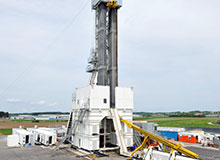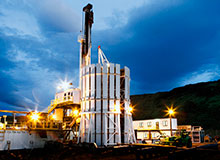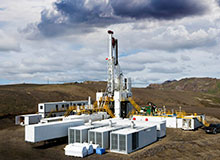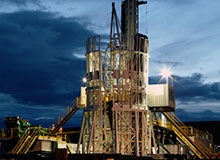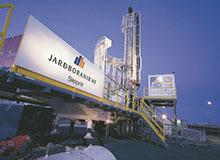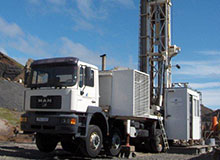A significant milestone has been reached in the IDDP-2 Project at the Reykjanes Peninsula in Iceland as drilling was completed in mid-January at 4,650 meter depth. All of the initial targets were reached. These targets were to drill deep, extract drilling cores, measure the temperature and search for permeability. Temperature at the bottom of the well has already been measured at 427 degrees Celsius, the pressure at 340 bars and drilling cores have been retrieved. It´s clear that at the bottom of the well the fluid has reached supercritical conditions and all the main objectives of the project have been achieved.
Never before has it been explored what lies beneath the geothermal field at Reykjanes. HS Orka´s well RN15 at Reykjanes was utilized for the IDDP 2 project. Well RN 15 was a 2,500 meter deep production well at the beginning of the project. The first phase of the project was drilling to 3,000 meter depth and casie the well with a steel casing and cement it firmly in the surrounding formations. Never before has a well in Iceland been cased to this depth. From there the well was deepened below the current system around the well, were the deepest wells are around 3000 meter deep.
The best outcome of the project would be if the well could be used for energy production, this would open new dimensions in geothermal utilization if it would be possible to source supercritical fluid, which has a much higher energy content than conventional high-temperature geothermal steam. Based on the estimated pressure levels in the well it might be possible to produce 30-50 MW from this well, which is substantially more than from regular geothermal wells. Potential utilization will not be known until the end of year 2018 when all research has been conducted, but first indications are positive. If each deep well would produce more power than conventional geothermal wells, fewer wells would be needed for energy production which would lead to less environmental impact and lower cost than we know today.
HS Orka has lead the IDDP-2 project in close collaboration with other partners in the projects, in Iceland those are Landsvirkjun, Orkuveita Reykjavíkur and the National Energy Authority. Norwegian Statoil has also been an active participant in the project. The project has also received a substantial grants from the EU as well as other international science grants. Drilling contractor was Jarðboranir, Iceland Drilling Company.
Source: HS-ORKA


